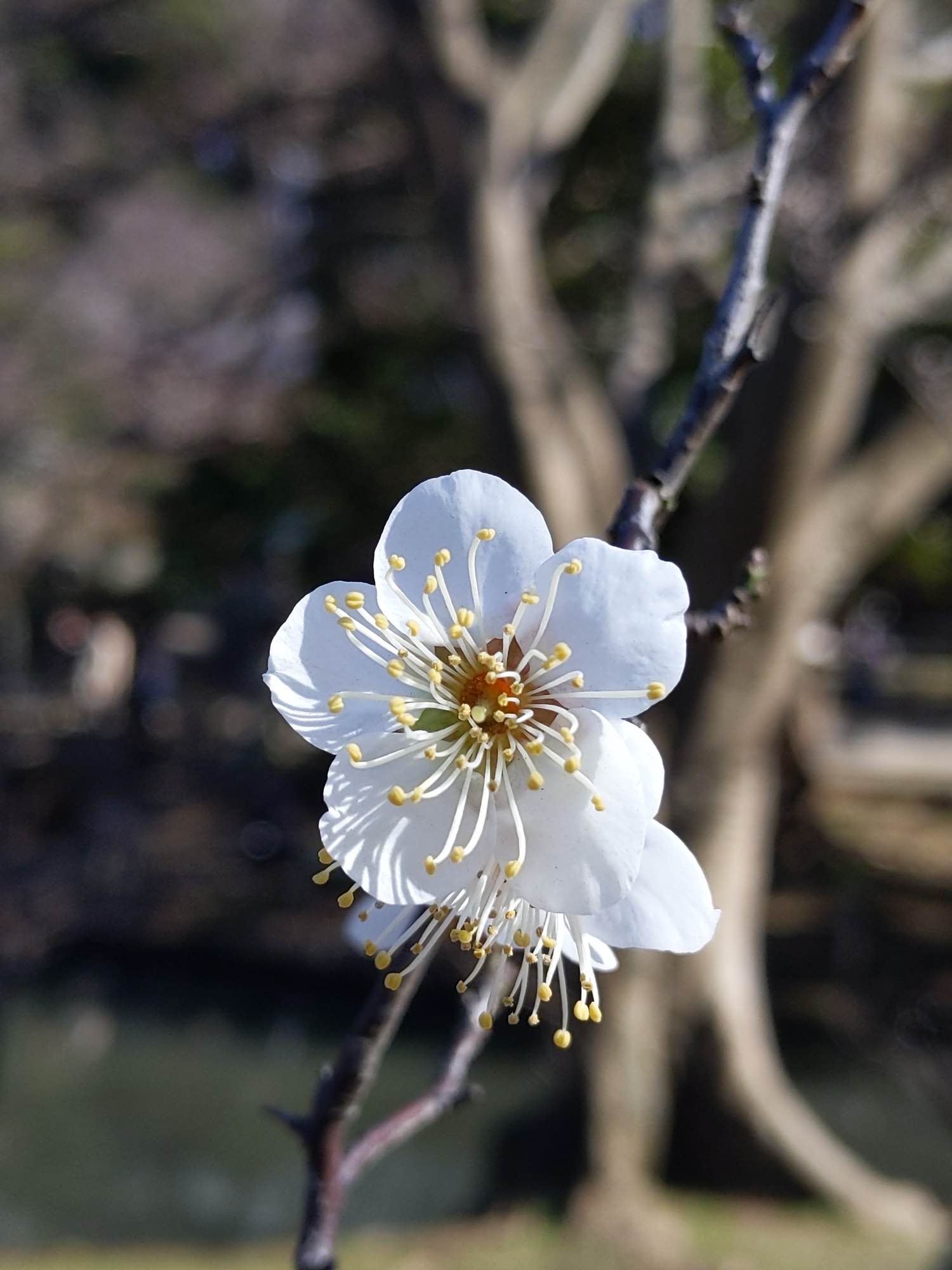Discovering Sankeien Garden, Yokohama
A Peaceful Outdoor Destination In Any Season
This gem of a Japanese-style garden in Yokohama offers an escape from the bustle of the port city with its natural beauty and important cultural heritage.
A peaceful refuge
When people ask about my favorite place in Japan, I first think of the temples of Kyoto or the famous castle in Himeji. But then, I always settle on my neighborhood’s own treasure, the Sankeien Garden.
Sankeien is a large Japanese-style garden in southern Yokohama known for its picturesque vistas, beautiful flora, historic buildings, and cultural events tied to the appreciation of the seasons. In the age of coronavirus, its spacious paths and generally sparse levels of visitors make it a good destination for a socially-distanced outing.
View this post on Instagram
From family sanctuary to important public cultural property
The garden is a large oasis in the city, covering 175,000 square meters adjoining the former coastline. As a resident or visitor to the area, it’s startling to catch a glimpse of the old sea cliffs from the garden, knowing that they used to fall directly into the sea, but now overlook industrial land that was reclaimed in the 1970s.
The garden was originally the property of Hara Sankei, an early 20th-century silk industry entrepreneur. He designed the grounds to be his family’s residence as well as a hub for the practice of Japanese traditional arts. The garden was opened to the public in 1906. In 2007, it was officially designated as a “Place of Scenic Beauty” by the Japanese government.
he designed the grounds to be his family’s residence as well as a hub for the practice of Japanese traditional arts
Sankeien is now a haven for our little family as well. Whenever we need a break from daily life, I load my toddler onto our bike and take him to feed the ducks, run on the paths through the trees, and marvel at whatever new flowers or garden animals we can spot that day. We make it a point to visit a least once per month as the garden takes on a completely new character with each shift in the seasons. There is always something new to discover.
Sankeien Garden Must-see spots
The garden offers families an easy-going opportunity to enjoy nature with plenty of amenities nearby. The garden is also a romantic destination, with couples often seen strolling arm-in-arm through the shaded groves, or posing in front of historic buildings. Solo visitors, too, can seek enlightenment from the still ponds, serene sculptures, and peaceful paths.
Tōmyōji Temple Pagoda
The garden’s most eye-catching—and oldest—structure is the three-story pagoda set on a hill overlooking the garden. Constructed in 1457 in Kyoto, it was moved to Sankeien in 1914. Visitors have the choice of a steep set of stairs or a more leisurely slope to reach the base of the pagoda and survey the garden below.
 © Photo by Nao Kitano
© Photo by Nao Kitano
Former Yanohara Family Residence
The early 19th-century house gassho-style house is a fun surprise: normally one would have to travel to Gifu prefecture—the house’s original location—to see this type of iconic steeply-thatched roof but Sankeien gives you a unique chance to explore one right in Kanagawa! Visitors can remove their shoes to tour the old residence and marvel at the still-working cooking fires, tatami (bamboo mat) floors, and traditional tools from daily life 200 years ago.
Buddhist Sanctum of the Former Tōkeiji Temple
A site for peaceful contemplation, this structure for Buddhist worship dates from the early 1600s. It was moved from Kamakura to Sankeien in 1907.
Sankei Memorial building
The tea room in the Sankei Memorial building is another highlight, although the traditional tea ceremony demonstration has been suspended during the coronavirus pandemic. The building also houses a small gift shop and gallery and is a welcome rest spot on particularly hot or cold days.
 © Photo by Sean Moorhead
© Photo by Sean Moorhead
Beauty in every season
I use Sankeien to teach my urban child about the changes of the seasons. It’s a place where he can experience the yellow-tinged glare of the sun and crunch of leaves in autumn, the clear skies and unexpectedly hardy foliage of winter, flower petals floating through the air in spring, the scent of wet earth in the rainy season, and the warm humid hug of summer as the cicadas buzz in accompaniment to our steps. There, he can discover all the shades of green.
The “blossoming calendar” gives the low-down on what is blooming when. Even outside the main attractions in each of the seasons, you can always discover unexpected beauty spots.
Winter
The garden is open during the New Year’s holidays with special traditional music performances to greet visitors.
In February, the delicate ume (梅, plum) blossoms give a hint of what springtime will soon bring. Don’t miss the steaming hot mugicha (麦茶, barley tea) served free of charge near the plum grove in the Outer Garden. The Chinese plums are also worth a look, with their more unusual yellow-green blossoms.
Spring
A paradise of sakura (cherry blossoms) awaits in spring. The largest clusters of trees surround the main lake, offering a perfect scene for ohanami (お花見, flower viewing), especially if accompanied by sakura dango (桜団子, rice dumpling) from the garden’s restaurant.
During the peak of the sakura season, the garden is open later in the evening for the otherworldly experience of yozakura (夜桜, night cherry blossom viewing).
The bright pink, lavender, and white tsutsuji (ツツジ, azaleas) that bloom later in April are also worth a visit.
Summer
In June, the garden offers firefly nights. The insects show off their twinkling lights over the babbling stream that winds through the Outer Garden. This magical display draws big crowds, so the logistics may change when next offered.
Early risers can delight in late July when the garden opens on weekend and holiday mornings at 6 a.m. for morning lotus viewing. The soft pink blooms catch the morning light and become translucent. A reward awaits for those who arrive early enough, with special breakfasts on sale at two of the park’s restaurants.
Autumn
The main event in autumn comes in mid-to-late November and into December as the maple and ginkgo trees erupt in a riot of color: deep red, blazing orange, and brilliant yellow. The Inner Garden in particular is breathtaking, with some historic buildings opened specially for fall foliage viewing.
View this post on Instagram
Insider tips
Don’t forget to feed the koi (鯉, carp) and ducks in the main pond! You can purchase yakifu (焼き麩, dried wheat protein) at a shop outside the main gates or from the restaurant next to the pond.
It is possible to use strollers in most areas of the garden, but a few sections of the Inner Garden are not accessible. As the paths are made of gravel, heavier-weight strollers do better.
There are three restaurants [Japanese-only page] in the garden selling soba, udon, oden, ice cream, dango, and more. Locals also like to frequent Kofuku, a small shop selling inari-zushi (rice in deep-fried tofu pouches) located next to the nearest city bus stop. Parking is available, but it can fill up quickly during peak times / special events.
Other facilities include:
- Coin lockers at the main entrance
- Restrooms with child seats and changing tables
- Free wheelchair rental
- Guide book and audio tours in English
Coronavirus counter-measures
Sankeien Garden is quite large, so other than the ticket window and some popular areas at peak times, it’s possible to practice social distancing throughout most of the garden. You can enjoy the garden without going indoors at all. At the time of writing, mitigation measures include:
- Temperature checks before entry
- Soap in restrooms and hand sanitizer stations
- Cancellation of guided tours and tea service
- Visitors are requested to wear masks
The deets
Getting there:
From Negishi Station (JR Keihin-Tohoku / Negishi Line):
From bus platform #1, take Yokohama city bus 58, 99, or 101 to the bus stop “Honmoku” (about 10 minutes). Walk about 10 minutes to the garden’s entrance.
From Yokohama Station:
From the East Exit bus platform #2, take Yokohama city bus 8 or 148 to the bus stop “Sankeien-Iriguchi” (about 40 minutes). Walk about 5 minutes to the garden’s entrance. City buses 58 and 105 also go to the bus stop “Honmoku,” a 10-minute walk to the entrance. You can board the same buses at Sakuragicho Station.
On weekends and holidays, the sightseeing bus Burari-Sankeien Bus runs from bus platform #2 of Yokohama Station East Exit to the Sankeien entrance.
More details are on the Sankeien Garden map.
Admission: ¥700 for adults (including high school students), ¥200 for children (elementary school and junior high students). See the website for more information about discounts.
Regular hours: 9 a.m. to 5 p.m. (last entry at 4:30 p.m.). Open every day except Dec. 29, 30, and 31. Extended opening hours for some special events.















Leave a Reply